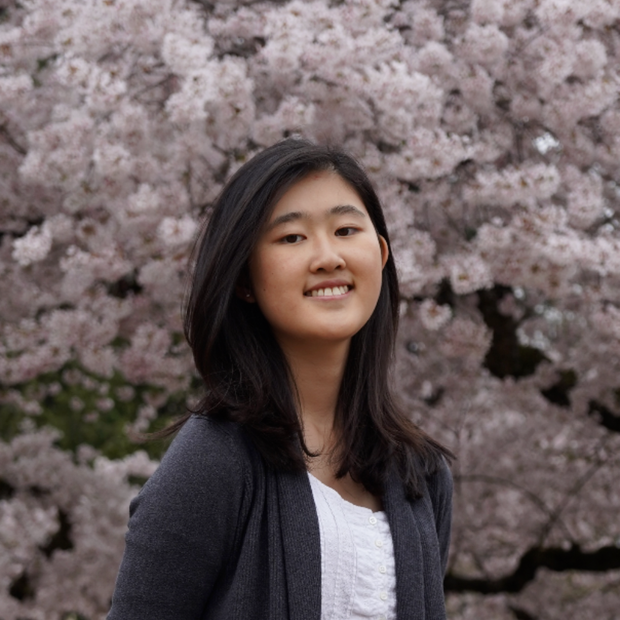During his public lecture April 30 at the University of Washington, Hur spoke on the struggles literary translators share, including the disorienting experience of translating very different authors in successive projects.
His visit to Seattle highlighted the city’s growing interest in literary translation, as its population becomes increasingly diverse.
The world of literary translation
Literary translation is a subset of the field that involves translating poems, novels and plays from one language to another. Unlike working on business documents or technical manuals, literary translation requires special attention to the author’s writing style.
Translation differs from interpretation: While translators work with written texts, interpreters help people understand spoken language.
By rendering books written in other languages accessible to new audiences, literary translators help increase appreciation for diversity.
For Hur, translating Korean books into English allows him to share aspects of his home culture in a more complex and nuanced way. That philosophy helps him choose which books to translate.
“My translation project as a whole is about showcasing a Korea that is not what the mainstream cultural production would have you believe,” Hur said. “As in I want to showcase a Korea that’s more diverse. That’s more feminist. That’s more edgy.”
One book Hur chose to translate was Bora Chung’s Cursed Bunny, which critiques capitalism and other systems embedded in Korean society. It isn’t what people might expect from K-dramas, which present a Korea that is heteronormative, capitalist and reluctant to critique its own systems, Hur said.
The burgeoning literary translation field has found a growing home in Seattle, which has fostered an international reputation as a literary center. In 2017, Seattle was designated a UNESCO City of Literature, a title shared by only one other U.S. city, for its thriving publishing industry, independent bookstores and literary events, among other factors.
Even Seattle-based Amazon has done its part to push international literature by launching Amazon Crossing. The imprint was lauded in 2015 by The Guardian for publishing three times as many works in translation as its nearest U.S. competitor.
The trials of literary translation
Shelley Fairweather-Vega, a Russian-to-English literary translator, said she thinks people have become more aware that a translation isn’t just retyping a text in another language.
“I have to generate a brand-new book or a brand-new poem in which all the words are mine,” Fairweather-Vega said. “So none of those were dictated to me. It’s only the ideas that are in place … it takes creativity. It’s working within constraints.”
The nuances of language that a translator must navigate is what English-to-French translator Emy Chevalier thinks of when she wonders how AI will affect the translation industry.
“I think it would be more useful to see [AI] more as a tool than as something that will take over, because it will never be able to translate an emotion or choose a very specific word that will have an impact on the reader,” Chevalier said.
Despite the growing visibility of their work, literary translators’ wages haven’t kept up.
In 2022, the Authors Guild’s voluntary survey of U.S. literary translators found that 63.5% of the nearly 300 respondents reported receiving less than $10,000 from literary translation in 2021. Only 11.5% of respondents relied on literary translation work as their sole source of income.
Despite that low reported figure, interpreters and translators as a whole are in demand, with a median income of $57,090 in 2023, according to the U.S. Bureau of Labor Statistics. This median income includes people who translate and interpret in more common interactions such as legal issues, medical appointments and schools. The field of interpretation and translation as a whole is expected to grow by 4% over the next 10 years because of the country’s increasing diversity, according to the Bureau of Labor Statistics.
Fairweather-Vega observed that some literary translators think talking about money is distasteful because they see literary translation as an art, not as a profit-maker. She sees that attitude as self-defeating, she said.
“We can still love it and still consider it an art form,” Fairweather-Vega said. “But we can also get paid for it.”
Literary translators in training
These shared experiences have helped solidify the local literary-translator community, especially visible during Hur’s visit, which drew a wide audience of students, professionals and community members.
It was sponsored primarily by the UW Translation Studies Hub, a center funded by the Simpson Center for the Humanities that hosts events and lectures related to translation as well as develops translation-focused educational resources for graduate and undergraduate courses. Founded in 2019, the TSH grew out of an idea pitched in a dissertation by Katie King, who was pursuing her Ph.D. in Hispanic Studies at UW after returning from a stint in London and finding few groups in Seattle focused on translation of books, poetry and literature.
Sasha Senderovich, one of three faculty members leading the TSH this year, said that one of its priorities has been engaging the public outside of the university, including local translators. Their work has paid off, he said.
“All of the work over the past five years is very evident as we put together [Hur’s] visit,” Senderovich said. “Because the effortlessness with which people are agreeing to participate in various events is really stunning.”
One literary translator who attended Hur’s lecture was Takami Nieda. An instructor at Seattle Central College, Nieda has recently been teaching a translation course. She said that the community college’s diverse student body includes many whose native languages aren’t English and who possess proficiency in other languages. This course is a way to leverage that and also challenge the status quo in which literary translators are overwhelmingly white – a conclusion supported by the 2022 Authors Guild survey, which found that 80.6% of literary translators surveyed were white.
“It was important to me to actually reach translators of color, immigrant populations, because there is a whiteness problem in the translation field and so we wanted to kind of open up access for [the] publish[ing] industry, an industry which is by and large a white space,” Nieda said.
Seattle has had a growing immigrant population for decades – which not only shows increasing need for local translation services but also could provide a potentially diverse pool of translators. Five-year estimates across 2017-2021 found that about 22.1% of Seattle residents ages 5 and up spoke a language other than English, according to a report from the city’s Office of Immigrant and Refugee Affairs. The top 5 languages spoken in Seattle were Spanish, Chinese, Vietnamese, Somali and Tagalog, the report said.
Seattle numbers mirror regional and national statistics. In Washington, 21.1% of households speak a language other than English at home, according to estimates from the 2022 American Community Survey run by the U.S. Census. The national average is 22.0%, plus or minus 0.1 percentage points.
Aria Fani, another faculty member leading the TSH with Senderovich, said he sees the hub’s work as a lifeline for the humanities and foreign-language study at the university, which has seen drops in funding and enrollment in recent years.
With those cuts, UW’s claims about being a humanistic institution that exposes students to the world and supports public-facing scholarship fall empty, Fani said.
“They only pay lip service to that,” Fani said. “We actually do it. We bring in the community.”




